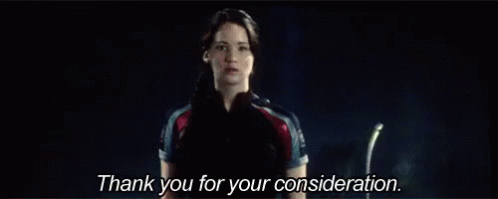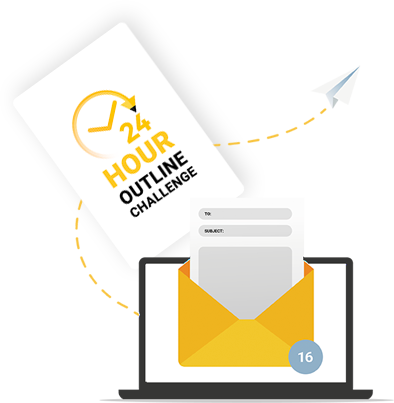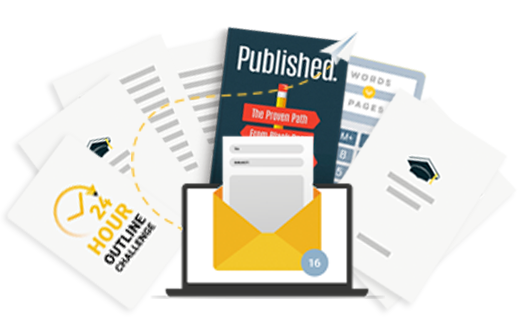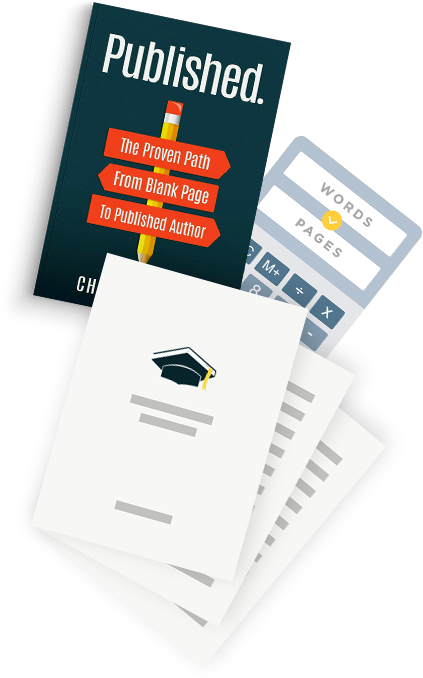Readers want nothing more than to root for characters. When they can sit on the proverbial sidelines and cheer on a character they’ve gotten to know for thousands of words, they’ll rejoice the book. But you can’t have that affect without including character weaknesses.
Most writers new to the craft often make the mistake of thinking their character should be good and have great qualities in order for readers to take interest. But the opposite is actually true.
A “perfect” character who makes no mistakes and always does the right thing is called a “Mary Sue” in the writing world. Not only are they lazy characterization, but they’re often too boring to catch readers because they’re not relatable and overly predictable.
Giving a character weaknesses makes them feel more real and gives you a way to grow the character. That growth is what readers love to see. But you can’t just slap on any old weakness and call it a day.
It has to make sense and it should be purposeful for your story. I’ll cover all of that in this read.
Here’s what you’ll learn about character weaknesses:
- What are character weaknesses?
- Character Weaknesses VS Flaws
- How Character Weaknesses Impact Story
- How to Develop Weaknesses
What are character weaknesses?
Character weaknesses are certain traits, characteristics, or areas in which your character is at a disadvantage. It’s often a necessary element they confront throughout the story and need to grow out of to complete their character arc.
Here’s a list of character weakness examples:
- Thinks everybody they meet means well
- Projects their own insecurities onto others
- Confrontation with authority
- Listening to authority
- Believes people without reason to
- Pretty women
- Handsome men
- The sound of gunfire
- Swimming or water
These are great examples of character weaknesses because in their presence, the main character will be at a disadvantage.
A main character who thinks everybody they meet means well will be at a disadvantage when faced with a person who does not mean well.
A character who has a weakness for pretty women will be at a disadvantage when they need to speak with one.
A character who has a weakness for confrontation with authority will be at a disadvantage when they need to speak with authority.

Character Weakness VS Character Flaw
Frequently used interchangeably, a character weakness and a character flaw are actually different, and impact the story in unique ways. A weakness affects the character externally while the flaw originates within the character.
If a character has a weakness, it’s toward or about something else. A weakness, after all, describes something that lacks strength or an area the character is at a disadvantage. A flaw, then, is more directed at the character’s make-up—their personality, habits, and traits. They have an imperfection in these areas.
For example, a character flaw could not be “pretty women”. However, pretty women can be a person’s weakness, especially if their flaw is that they see women as objects to marvel at and possess.
These two things can and do often interact with on another, as you can see above, though they serve different purposes in the plot.
Here are a couple examples:
Character Flaw: is selfish
Character Weakness: working as a team with other people
These two can be caused by one another. The fact that this character is selfish can make working in a group with them difficult, where they’d find they’re not good at working with other people.
You can also think of character weaknesses vs character flaws as this: the flaw creates to the weakness.
If a character has a flaw of having anger issues, their weakness might lie in certain irritants that can instigate the anger issues. For example, a whistle or other high pitched noises might be the weakness that showcases the anger issues flaw.
The Impact Character Weaknesses Have on Your Story
Obviously, your fictional characters matter in your story. They’re probably the lens you view the story through and therefore, the weaknesses you bestow upon them will impact both that lens and the actions the characters take.
In fact, I recommend developing the character weaknesses before anything else so you can shape the rest of the character around the important aspects.
Here’s all that you need to consider about character weaknesses and how they affect the story:
- Driving Conflict: Weaknesses often lead to internal or external conflicts. For example, a character’s fear of commitment might create tension in a romantic relationship, driving a significant plot point.
- Forcing Growth and Change: Overcoming weaknesses is a powerful source of character development. As characters confront and grapple with their vulnerabilities, they grow, learn, and evolve. This is what gives structure to their character arc, and ultimately impact the story’s climax.
- Creating Tension and Suspense: Weaknesses can introduce uncertainty and suspense. For example, a character’s addiction might lead readers to wonder if they’ll succumb to it in a critical moment.
- Increasing Relatability: Readers or viewers find characters with flaws more relatable, as mentioned earlier in this post. Witnessing characters struggle with their weaknesses allows audiences to connect on a deeper, emotional level. What this also does more subconsciously is create a sense of hope for the reader. Witnessing others (even fictional) overcome obstacles and grow gives us hope for ourselves and our own weaknesses.
- Adding Depth and Realism: Characters without weaknesses can come across as one-dimensional. Introducing weaknesses makes them more complex and human, enhancing the depth of the story.
- Guiding Choices and Actions: Weaknesses influence a character’s decisions and actions. They might make choices based on their fears, insecurities, or past traumas, driving the plot in specific directions. This can be both to their benefit or detriment. Because yes, sometimes character weaknesses work in our favor, which only reestablishes them, unfortunately.
- Creating Sympathy or Empathy: A character’s weaknesses can evoke sympathy or empathy from the audience. A character battling an addiction may elicit feelings of compassion from readers.
- Raising Stakes and Consequences: They raise the stakes in a story. For example, if a character has a fear of heights, a climactic scene on a high ledge becomes even more intense. Plus, this example would require the character to outgrow their weakness in order to accomplish their goals, which completes their character arc.
- Providing Opportunities for Redemption: Characters with weaknesses often have moments of reckoning or redemption. Overcoming their flaws allows for powerful, emotionally resonant moments in the story. They’re the scenes that make readers cry or give them goosebumps.
- Driving Subplots: Weaknesses can lead to the development of subplots. For example, a character’s insecurity might lead them to pursue a personal goal, creating a secondary storyline. If a character needs to be able to wield a weapon and can’t, they’ll have to take up training sessions with another character, which contributes to a subplot that includes those lessons.
- Highlighting Relationships: Weaknesses can impact how characters interact with one another. They may lean on others for support, leading to the development of deeper relationships. Seeking another character to help them when they know they have a weakness leads to these moments.
- Setting the Tone and Mood: The presence of weaknesses can influence the tone of the story. For example, a character struggling with depression might contribute to a more somber atmosphere. Their inner monologues and internal ramblings will be darker and pessimistic.
- Creating Irony and Foreshadowing: Character weaknesses can lead to moments of irony or foreshadowing. A character’s unresolved weakness might foreshadow future conflict in a story or plot twists. Many astute readers will even predict how a character will react, knowing their weaknesses.
As you can see, the weaknesses will create a significant portion of your story. So knowing how to develop them well is really important for shaping the story into the one you wish to tell.
How to Develop Your Character’s Weaknesses
A lot of advice you’ll read out there will say to know your character inside and out. That until you know them well, you won’t be able to create weaknesses.
I say those people have it backward. The weaknesses create the other parts of your character.
1. Start by meshing plot & character
As much as the character drives the plot, the plot will also dictate the type of character. It’s often best to think about these at the same time in order to iterate each depending on what you come up with.
For example, you may have an overall premise of a story and no character. Take the premise and ask yourself: what type of character would be interesting, conflicting, and satisfying to read in this plot?
Notice that I didn’t say which type of character would “fit” into the plot. You actually don’t want to create a character to be too well-suited the role they’ll play in your story. The reason for that is so you can have ample opportunities for conflict.
Take Robin Hobb’s The Assassin’s Apprentice, for example. She writes about Fitz, a bastard-born kid who joined a royal Keep and learned the arts of assassination, where he must be quiet, memorize everything, and become a spy. The way Hobb makes this more interesting is the fact that this kid looks—and acts—like his father. Being a quiet observer is not an easy feat, especially given the people around him. This is both Fitz strength and weakness.
And that’s a bit more advanced for most new writers. Being able to write character weaknesses that are also their strengths is a very powerful skill for a writer to have.
2. Think of weaknesses for that plot
What would prevent a character from succeeding given the plot and other characters? If we continue with the example of Assassin’s Apprentice, it was a great idea to give the main character a secret he can’t share even with his assassin teacher, despite Fitz being the only one who knows about this teacher.
It’s important to remember how these weaknesses impact the plot, too. Fitz has a weakness for a girl he loves. That weakness is exploited by certain people in the book, which puts more tension into the story and onto Fitz’s experience in the book.
Every time you enter into a new plot idea, ask yourself what would make your character fail here? They don’t always need to fail, but there is definitely down swings to stories that have to do with failure. By asking this question, you can expose character weaknesses that will make for the best story.
3. Determine their guiding beliefs & the downsides
What’s realistic are character weaknesses that coincide with our beliefs about the world. What we believe in deeply impacts our actions. If you believe that all people are good deep down, and are faced with someone who is certainly not good, this is one of your character weaknesses.
This belief will lead characters to make decisions that cost them. Come up with a list of 3 guiding beliefs your main character has, and then twist those until you can find the character weaknesses within them.
Here are a few examples of guiding beliefs turned into weaknesses:
Belief: There’s nothing a night of rest can’t solve
Weakness: under reacts to important situations
Belief: If the right thing is done, recognition should be shown
Weakness: Only does something good with an audience present
Belief: The best results come from people working together
Weakness: Doesn’t trust themselves to make decisions
Basically, figure out the downside of each belief and decide which of the character weaknesses is a good one to make a point of in your story and expand upon. Keep in mind that guiding beliefs don’t have to be good or bad, right or wrong. They just are and will stem from your character’s backstory.
4. Tweak & iterate
You will develop your own process. As with any advice you read online, it’s all one of the many ways you can go about writing a story. This way works well for me. Balancing plot and character and trading off which you develop is the best way I’ve found to write characters who are entertaining and interesting to the plot.
You might find that developing a character fully and then presenting them with plot points to see how that character reacts, and then changing the plot until you have something entertaining, works better for you. If you’re a discovery writer or somewhere on NovelPad’s outlining spectrum, you’ll make them all up as you go.
The point is to do what works for you. What allows you to make progress—good progress? Do that!
And if you ever need help crafting characters, go ahead and grab this character development checklist to help you flesh one out, including the character weaknesses.



